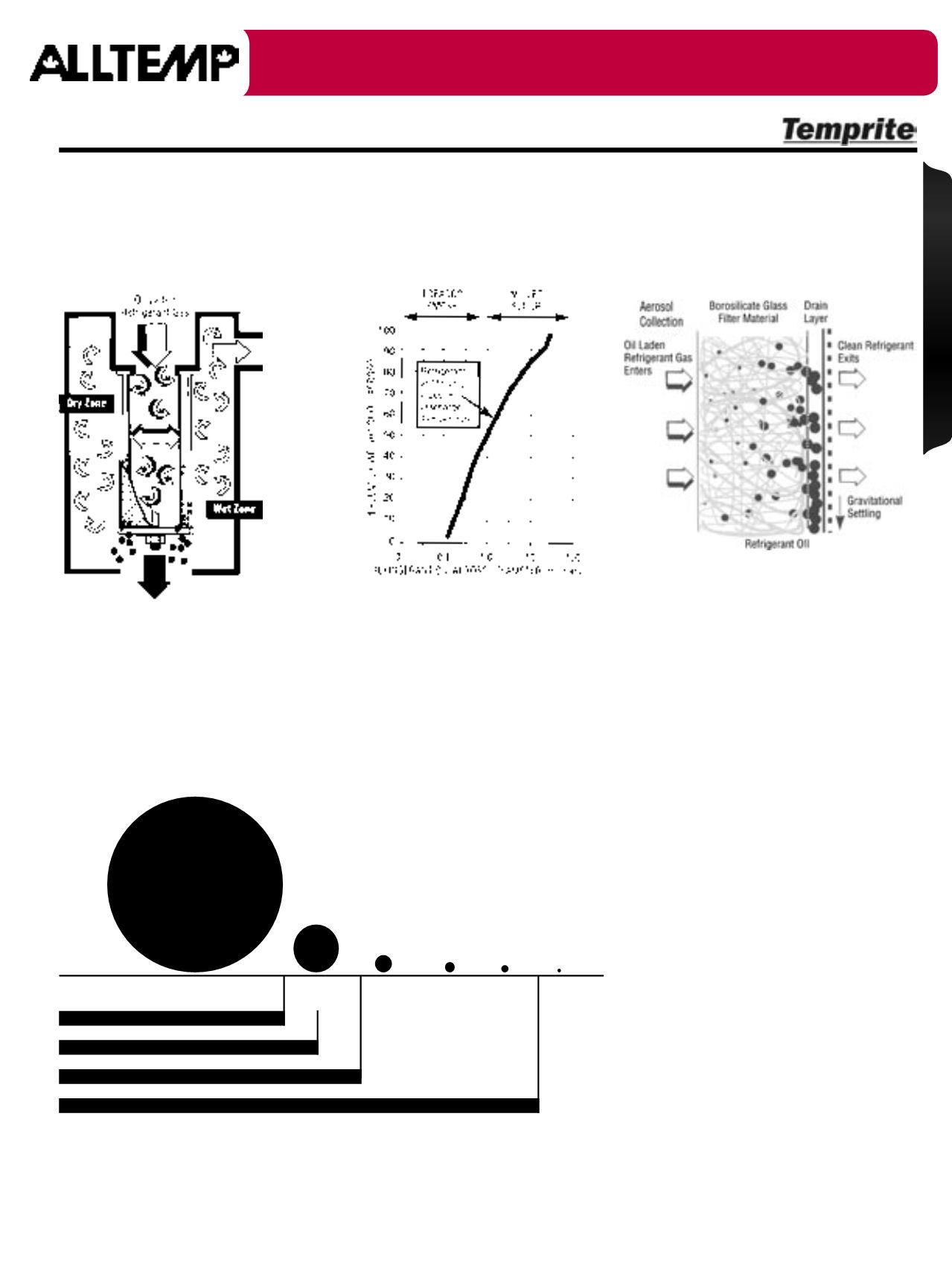
48
Refrigeration
Oil Separators
Why Coalescent Oil Separators?
Oil Separator Cross Section
Atomized oil present in the
discharge gas enters the interior
of the filter flowing from the inside
of the filter to the outside. Droplet
sized oil of 100µm (microns)
are generally separated here by
expansion of gases.
Typical Aerosol Distribution
This graph illustrates micron
particle sizes from 0.01 to 100.
Refrigerant oils in aerosol form
typically range from less than 0.1
to 40 microns in size. The majority
of aerosols in the discharge gas
are in the 0.4 to 10 micron range
with greater than 50% of the
aerosols less that 1 micron in size.
Micronic Order of Magnitude
Coalescent matrix filters are able
to capture solid contaminants
above 0.3 microns and aerosols
in liquid form to 0.001 microns.
Conventional, centrifugal and
impingement screen separators
only work to 100 microns, missing
approximately 50% of the aerosols
in the mass flow.
Filter Cross Section
As aerosol sized gas enters
the borosilicate glass matrix,
it vibrates from side to side
colliding with other molecules and
agglomerating. Large oil droplets
are moved to the outside of the
filter and enter the gravitational
drain layer.
Electro Mechanical Separators
Conventional / Centrifugal / Impingement Separators
Settling Chambers / Separators
Beach Sand
1,000µm.
Human Hair
100µm.
Pollens
10µm.
Tobacco
Smoke
1µm.
Oil
Smoke
0.1µm.
Oil
Smoke
0.01µm.
Coalescing Separators
Temprite Oil Separators
Temprite’s quality oil separators are the most efficient refrigeration components available worldwide.
• UL, cUL, CSA & A.S.M.E.
Oil Separators


